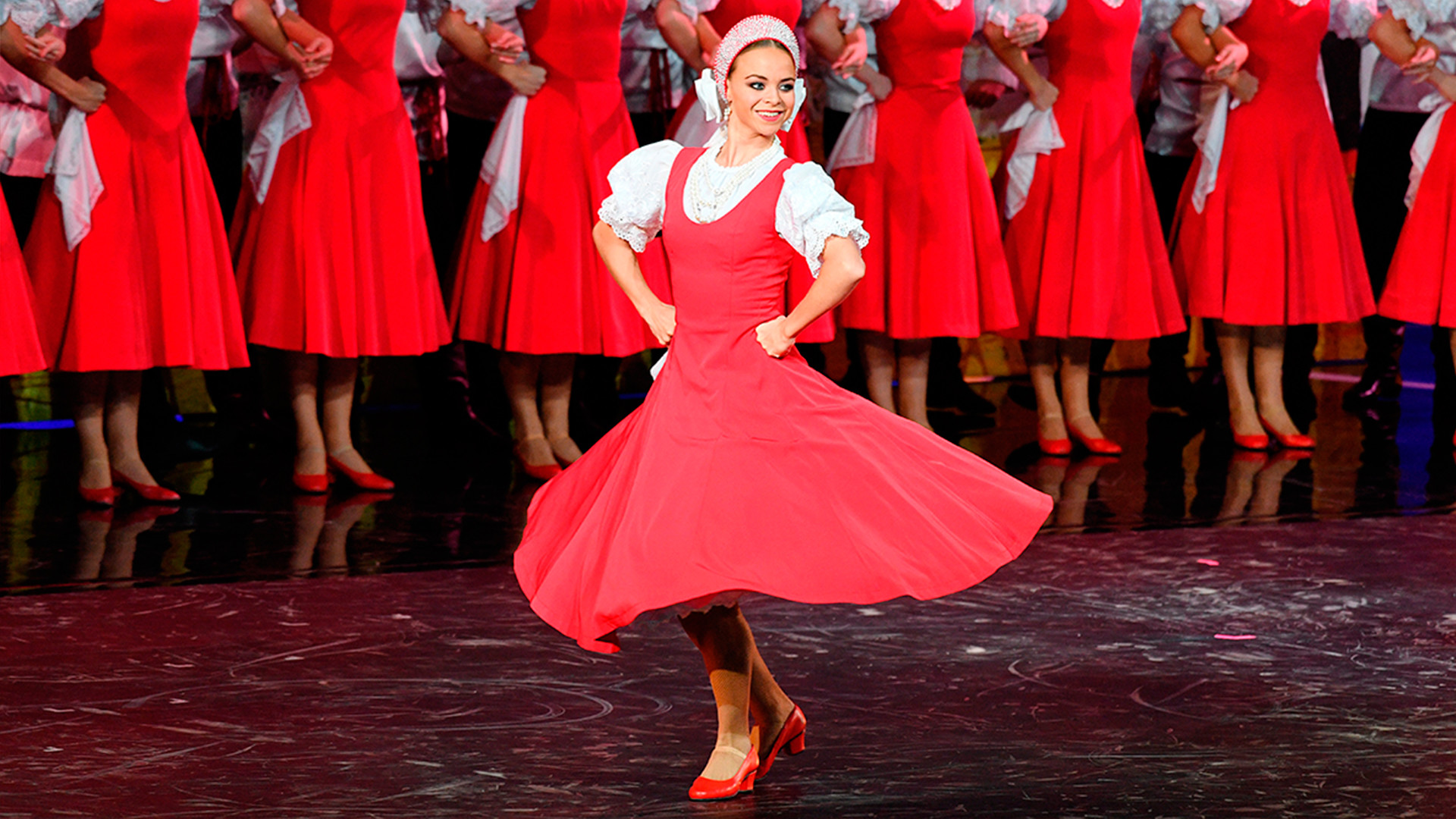
“What Russian doesn't like a fast ride?” wrote Nikolai Gogol in his novel, Dead Souls… We would add: “What Russian doesn’t like a fast ride and a boisterous dance!” Not a single merry Russian feast or party is imaginable without singing and energetic dancing. But this trend didn’t appear recently. Russians have it in their blood.
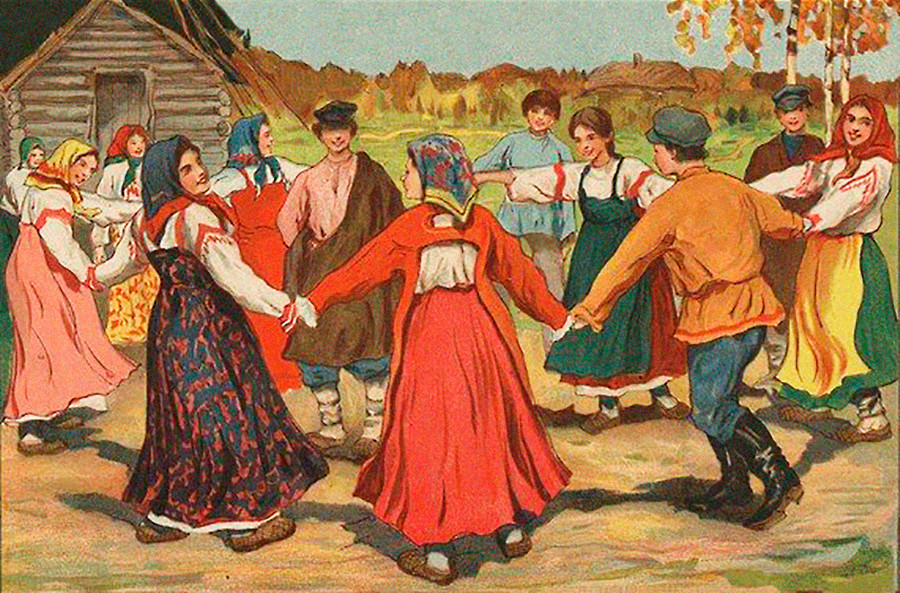
The performance and movements in these dances can differ depending on the region, but here are several basic types that have been widely spread across Russia for centuries.
One of the most famous Russian dances is khorovod, with people moving around in a circle holding hands. This dance is common for all Eastern Slavic nations and is usually devoted to Slavic (and pagan) holidays, and it has a ritual meaning. Today, rucheek, a modification of khorovod, is popular among Russians. It is a sort of ‘game’ where paired dancers run through the corridor of two lines of people holding their hands up. Khorovods are still popular today and made by children around the New Year tree.
Read more about khorovod here.
There are also many different improvised dances called Russian plyaska, which literally means ‘dance’. Usually, people danced during a festive occasion or at a large market event. The main movements are squats, clapps, and taps. Men and women dance without touching each other, while others watch, clap and sing. Women often move smoothly like a swan holding a handkerchief, while men dance fervently with high amplitude movements and jumps.
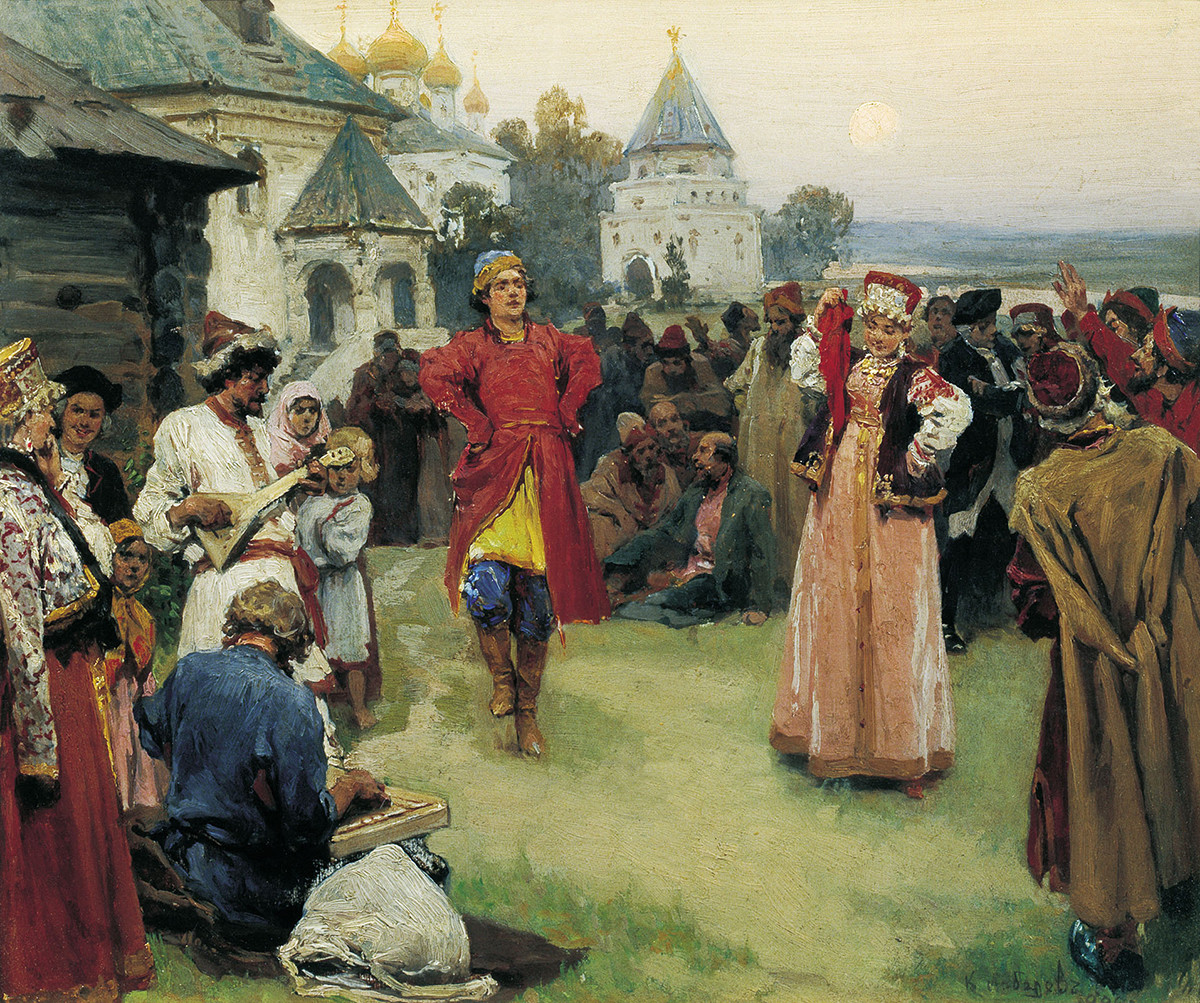
Klavdy Lebedev. Russian plyaska, 1900 - - Государственный музей искусств им. А.Кастеева Республики Казахстан, Алматы
A. Kasteyev State Museum of Arts, KazakhstanSome ethnic subgroups had their own plyaska dances: for example Cossacks danced the cheerful and dashing Kozachok.
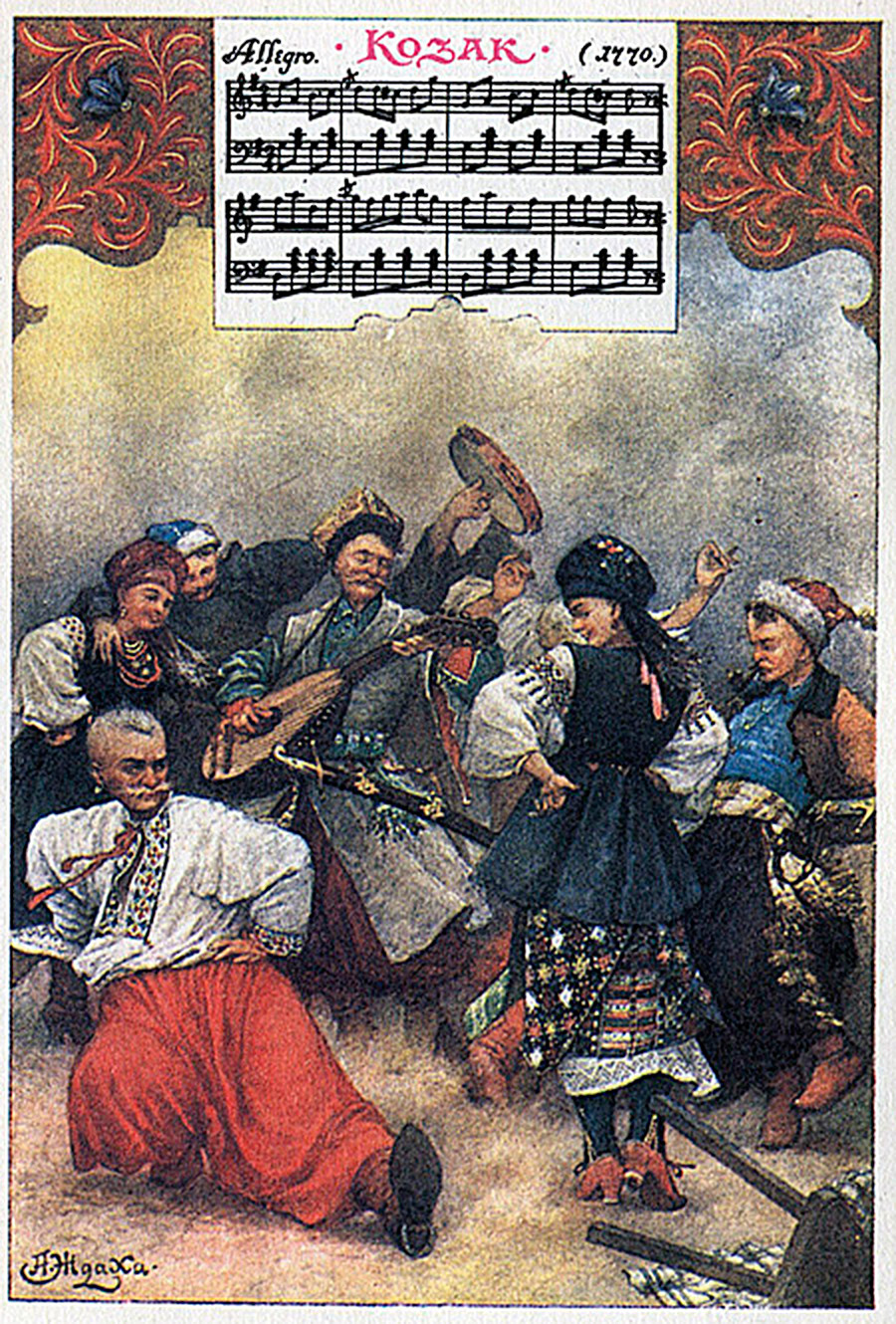
Kozachok
Public domainWhile sailors danced Yablochko, which mostly consisted of squats and thrusting the legs straight out. This element symbolically shows an aspect of fighting.
The 19th century witnessed innovations in dancing and song which proved so popular that they started to be considered as ‘folk’. For example, men danced a lot to Kamarinskaya, a song by Mikhail Glinka, and that’s how this type of squat dance got its name.

Kamarinskaya dance in Russian Empire
Public domainAnother interesting dance is Barynya (literally, ‘landlady’), which is an ironic, jocular dance that first was a parody for a conflict between a landlady and her serf. Through the years it became an energetic, joyful dance, usually set to the accordion - just like in this real video from 1911.
It would be unfair not to mention the Russian Quadrille, a dance that has roots at the royal French court. It came to Russia in the early 18th century with Peter the Great who adopted European dresses, manners and court ceremonies en masse. But then the dance reached the lower classes and transformed into a folk dance. Such dances are often done in pairs, and by changing partners and moving across a square.
Peasants danced in their villages since pagan times and up to the mid 20th century. In the 1930s, folk dances were transformed. Before then, these chaotic dance movements were a part of everyday peasant life. But then the Soviet authorities transformed these amateur performances and took them to a very high level, making it one of the main Soviet calling cards during official events in the West.
The first professional folk dance ensembles were founded in 1937 by the legendary dancer and choreographer Igor Moiseyev - and this company, now titled Igor Moiseyev Ballet, is still one of the leading in the country with a busy schedule of foreign tours. They focus not only on Russian dances but also on dances of all the Soviet ethnic groups, as well as folk dances from around the world - including the Sicialian tarantella and the Argentinian shepherd gaucho dances.
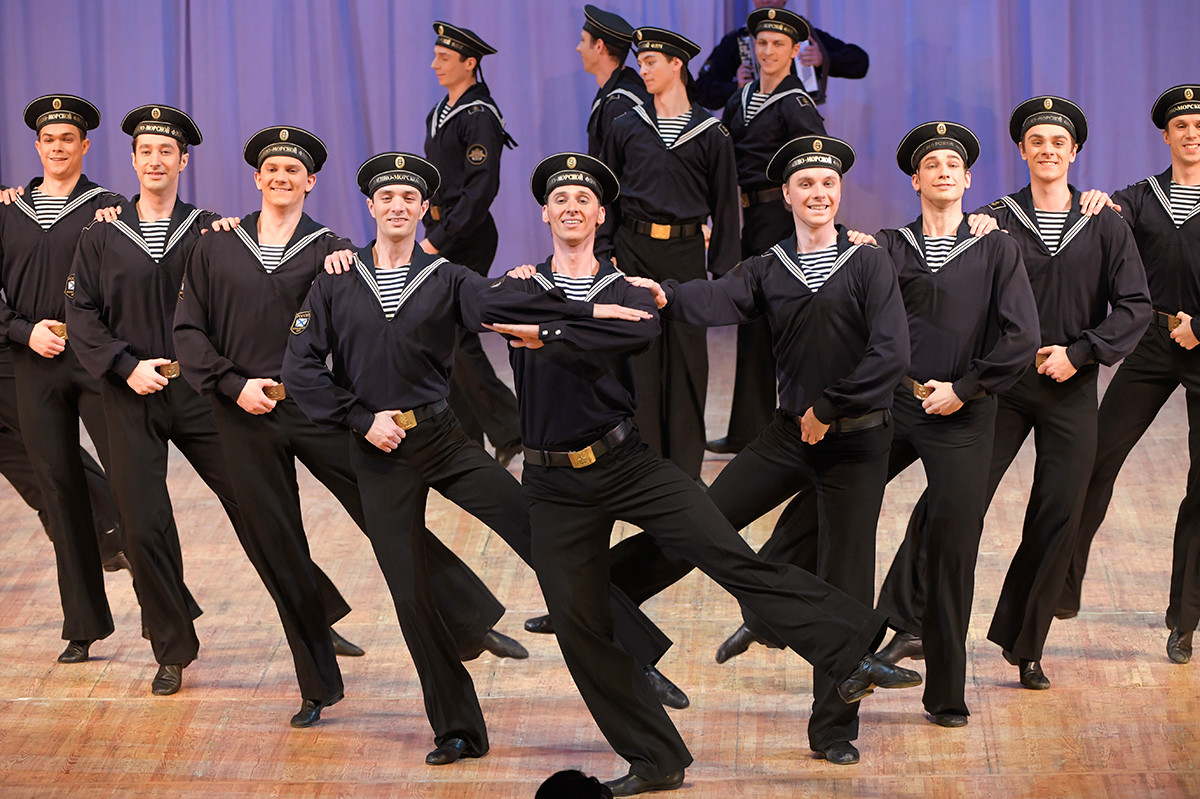
Yablochko dance by artists of the Igor Moiseyev ballet
Vladimir Vyatkin/SputnikAmong the other most prominent folk dance ensembles, in addition to the Igor Moiseyev Ballet, are Berezka, Gzhel, and the Alexandrov Ensemble of the Russian armed forces. They perform on Russia’s leading theatrical stages and with the accompaniment of symphonic music. Studying folk dance is comparable to ballet school. If ballet dancers have ballet barre classes in their soft shoes and pointes, Russian folk dancers train in special boots similar to those that are used in tap dancing.
It’s incredibly complicated and requires a strong body and the ability for control, as well as perfect precision of movements. But it also means working in a team, where you have to have not only peripheral vision but also eyes on your back to see what the others are doing, and to follow synchronistically while dozens of dancers do incredible movements.

'Summer' Russian folk dance by artists of the Igor Moiseyev ballet
Grigory Sysoev/SputnikTo become a professional folk dancer one has to start dancing at an early age, to study in dancing school, and then in theatrical high school in a dance department or choreographic high school. To receive a place in a top performing troupe you have to be the best, just like in football. But you can still dance at home in your apartment. Just don’t forget to move the table and other furniture!
If using any of Russia Beyond's content, partly or in full, always provide an active hyperlink to the original material.
Subscribe
to our newsletter!
Get the week's best stories straight to your inbox